Teapots: the best models and choices

Many people cannot imagine their life without drinking tea, an integral attribute of which is such a household unit as a teapot. On the modern market for home appliances and tableware, they are presented in a rich variety, which often makes it difficult to choose both for ordinary tea lovers and for those who are seriously fond of tea ceremonies. Therefore, before buying a teapot, it is important to pay attention to details such as the material of the product, its design features, as well as the manufacturer. All these nuances will be presented in detail in this article.
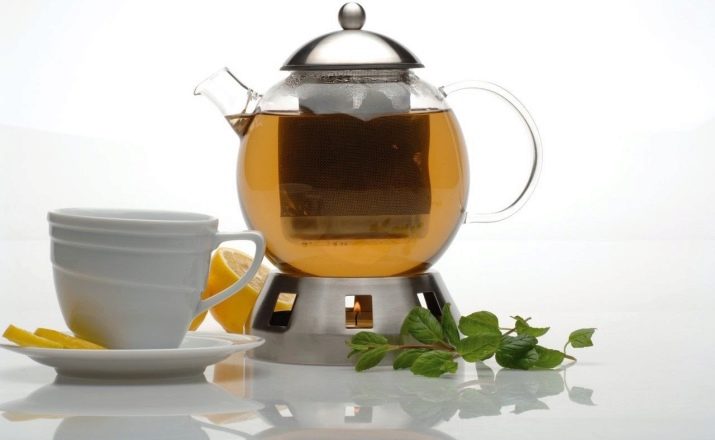
Description and purpose
A teapot is a special type of pot that is used to brew tea, tea and herbal drinks. These drinks are based on dried raw materials, which are tea leaves, herbs, flowers and other components. This composition is added to the kettle and poured with boiling water; in the process of such a thermal effect, the dry components swell and saturate the boiling water with a special taste and aroma. Brewing kettles in most cases are small containers, consisting of one compartment. They also have lids, usually made of a material similar to the body, and spouts or recesses in the body through which the finished drink is poured into cups.

The advantages of using teapots instead of tea bags is the ability to use natural healthy raw materials for home tea ceremonies.
Drinks brewed with this machine have a richer taste and aroma., and strong tea, which is made in this way, is enough for both family gatherings and for a larger company.Some note that the disadvantages of using these products are the need to wash them, as well as the more time-consuming preparation of tea. However, for real lovers of this drink, these nuances are not critical.

Manufacturing materials
The fundamental criterion that distinguishes teapots from each other is the materials from which they are made.
Each type of raw material has special characteristics that make it possible to identify the main features of a particular vessel for brewing tea.
Each of their materials has its own advantages and disadvantages, and is also designed for certain types of tea compositions.
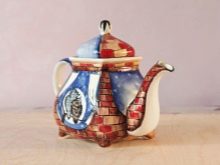

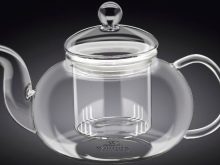
Glass
Glass brewing vessels look very aesthetically pleasing due to their transparent body, through which you can observe the process of acquiring tea-colored boiling water and the metamorphosis that occurs with dried leaves. However, the downside of such models is their inability to keep warm for a long time, which in itself contradicts the correct procedure for brewing tea. To compensate for such a disadvantage, modern manufacturers have modernized glass models, providing them with additional elements such as an induction bottom and a candle... And also borosilicate glass began to be used as the main raw material, which tolerates additional heating of the vessel on the plate well.
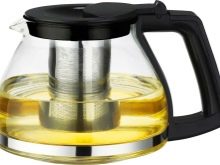


Separately, it is worth noting such glass models, which are equipped with a special compartment, reminiscent of a thermo mug.
These options are so-called double-walled teapots. The additional compartment resembles a double-walled glass flask fitted with a sieve. Tea leaves are placed inside it. Sometimes this element is made from a different material, such as porcelain.
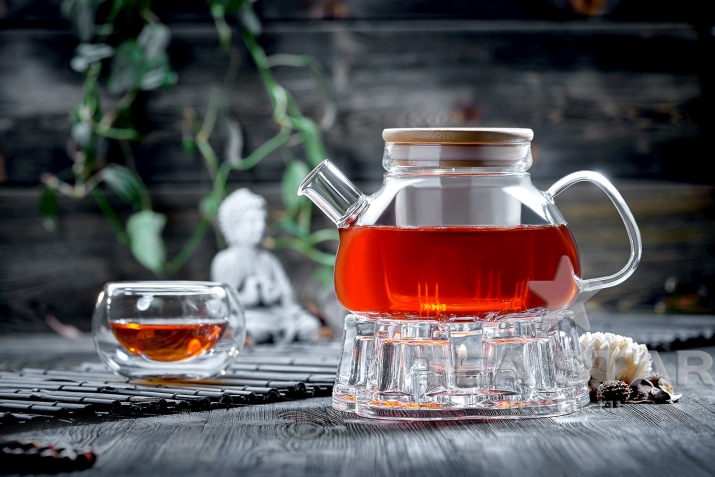
Porcelain
A popular material for teapots is porcelain, which belongs to the category of elite materials for making dishes. Models made of elite porcelain look very aesthetically pleasing, but because of the thin walls, they retain heat worse. Porcelain analogs with denser walls of the case are able to maintain high temperatures for at least a quarter of an hour.
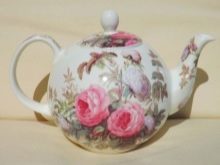
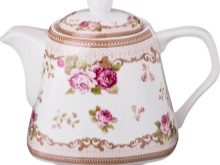

Such products are considered particularly preferred for brewing dark teas.
It should be noted that porcelain maintenance can be a bit trickysince it is not recommended to wash them with cleaning agents, it is only permissible to rinse them under running water. Alternatively, for a more thorough cleaning, you can use baking soda, after which it is recommended to rinse the teapot first with warm and then cold water. Some use such porcelain models only for special occasions, trying to thereby extend their life.

Faience
The material that is often passed off as porcelain due to its external resemblance is faience. It is cheaper than luxury material, but it can be styled like porcelain and sell for much more than cost. Faience is able to maintain the hot temperature of the liquid poured into it for a long time, but its disadvantage is fragility and the risk of chips and other defects during operation. To care for earthenware teapots should be done in the same way as for porcelain.
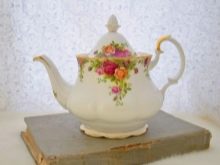
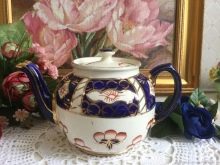

Clay
Fans of lighter teas will love the teas made from triple-fired clay. Other models are more decorative than suitable for permanent use. This material is rather fragile, but at the same time, due to its porosity, it is able not only to absorb tea vapors and odors during the brewing process, but also to give them away during subsequent preparation of the drink, further saturating it.
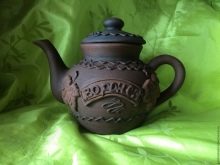
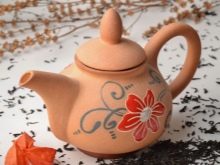
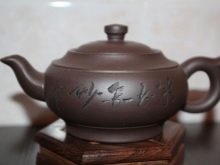
This property is a virtue of earthenware only if you use it to brew one type of tea.
Otherwise, during the brewing process, the smell of another type of tea, which was brewed in the teapot before that, can partially penetrate into one variety, making the porosity of the clay material a disadvantage. If you prefer to alternate between highly flavored tea drinks, it's best to stick with a different material.

Metal
Metal is a material for teapots, which is distinguished by its special strength and resistance to mechanical stress. Many models have a rather aesthetic appearance and easily fit into the interior of kitchens decorated in modern styles. These products retain the temperature, but some urmans in the field of tea drinking note that the drink brewed in metal teapots acquires a characteristic taste.
It is believed that these models are quite suitable for brewing simple varieties.
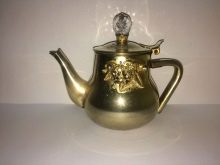
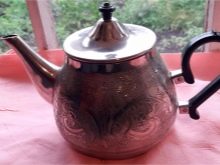
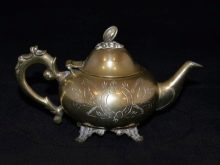
Cast iron
Despite the fact that cast iron models are not as common as products made from other materials, a cast iron teapot for brewing is considered one of the most convenient. He is the leader in terms of heat retention time. Compared to metal ones, such models are coated from the inside with a special glaze, which does not allow saturating the drink with flavoring impurities during the brewing process.
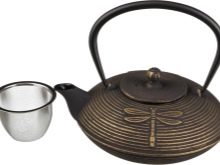
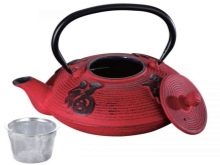
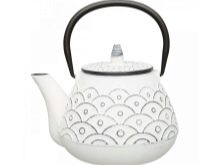
Units made of such material have a convenient handle located above the body.
The main disadvantage of cast iron teapot options is the price, which is higher than that of teapots made from other types of raw materials.
Plastic
Among the more modern raw materials, there is also plastic, which is not taken seriously by most tea drinkers. It is used not only for the manufacture of the body, but also for the creation of individual elements of the brewing structure.
Thus, based on your attitude to the tea ceremony, the types of tea you like, and even the specifics of the interior of your kitchen, you can choose the perfect material for your teapot. Most of them are found on the market in a large assortment, painted in various colors and contain such elements on their body that they will fit into the atmosphere of your kitchen.
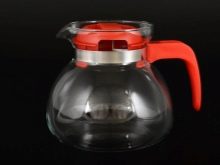
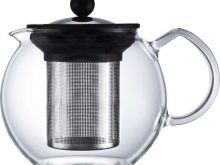

Shapes and volume
Along with the material, special attention must also be paid to characteristics such as the shape and size of the teapot. A sign such as size is determined by the number of people for whom it is planned to brew a drink. If the unit will be used by 3-4 people, then it is quite appropriate to choose a product with a volume of 1 or 1.5 liters. For one person, it is enough to use a small kettle, the volume of which is no more than 0.5 liters.
Large types of teapots with a capacity of 2-3 liters will become indispensable for a large company.
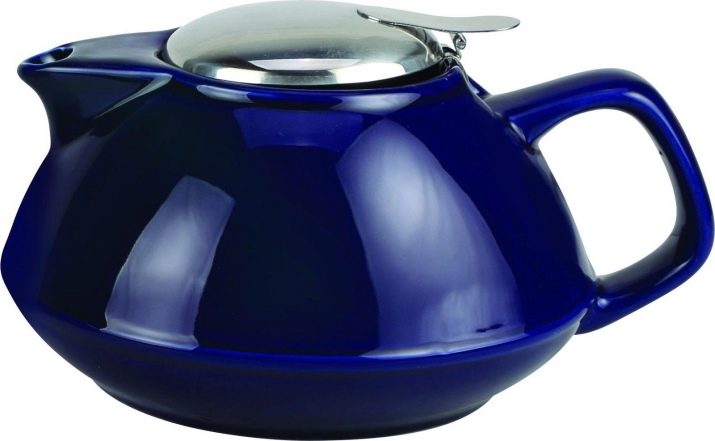
If there is no desire to buy such a large product, then you can use several smaller models, for example, 2 x 1.5 liters. It is also worth considering the individual preferences of tea lovers, since they directly affect the consumption of the brewed component. Lovers of strong tea will empty the teapot faster, and those who prefer to additionally dilute the drink with boiling water will need a smaller teapot.
The traditional shape of the teapot is round. It is believed that the distribution of heat in it occurs ideally, and also these "pot-bellied" models most fully reveal the aroma of the drink. However, now this tableware is not limited to these shapes, since unusual oval and square products are also created from the whole variety of materials, some of which are decorative and are created by designers specifically for this.


The cylindrical shape is inherent in such a model of a teapot as a French press, which consists of heat-resistant glass and metal.
Inside the device there is a piston with a press plate equipped with holes. During the brewing process, the tea leaves filled with boiling water are pressed against this plate, which, as it were, squeezes out the taste and aroma from them, making the drink rich.This model is very suitable for strong tea lovers who do not adhere to all the nuances of a classic ceremony.
It is worth mentioning a model such as a thermos kettle, which has an elongated shape that resembles an egg. Inside the plastic case there is a flask made of glass, as well as a strainer, which serves as a kind of filter that prevents tea leaves from getting into the drink during the brewing process. The water is drained through a convenient spout located in the upper part of the case.

The lid with a twist mechanism closes hermetically, allowing the drink to remain hot for a long time.
An interesting design is a brewing unit with a drain button, which consists of two flasks. Inside the large flask - the main body - there is a smaller flask, and it is into it that the raw materials for the brewing are poured and water is poured. When the boiling water acquires all the necessary qualities of tea, you just have to press the button to open the pouring valve - the water will drain into the lower flask, and the tea leaves will remain in the upper one. Thus, the shape of the teapot is determined by the design features of its mechanism, and the size is proportional to the size of the company for drinking tea.
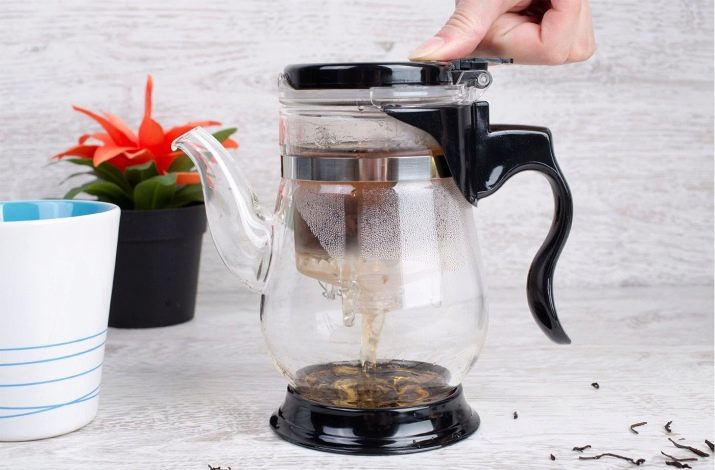
Forms also function as an aesthetic component, as their lines can be in perfect harmony with the interior of the room.
Top brands
Before buying a tea brewing machine, you should pay attention to a number of manufacturers who have long established themselves in the market and are in demand among consumers.
- Mayer & boch famous for its miniature round and oval tea brewing products. These products are made of cast iron, glass, metal and do not exceed 1 liter in volume. Many models are equipped with filters, sieves and stands, which greatly simplify the process of making tea. Among glass structures, there are also larger models - up to 1.5 liters. They are equipped with plastic elements in the form of a lid and a handle.
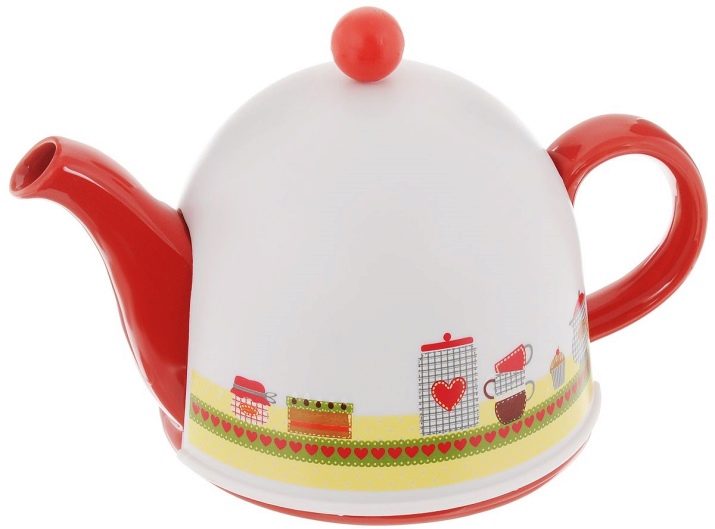
- German products from the Gipfel brand presented in the form of small ceramic teapots, painted in various colors and having a volume of up to 1 liter. There are also miniature cylindrical glass products and stainless steel products with a volume of up to 2 liters. Some round glass models have a stainless steel filter inside. The price for products made from the latter material is higher than for others.
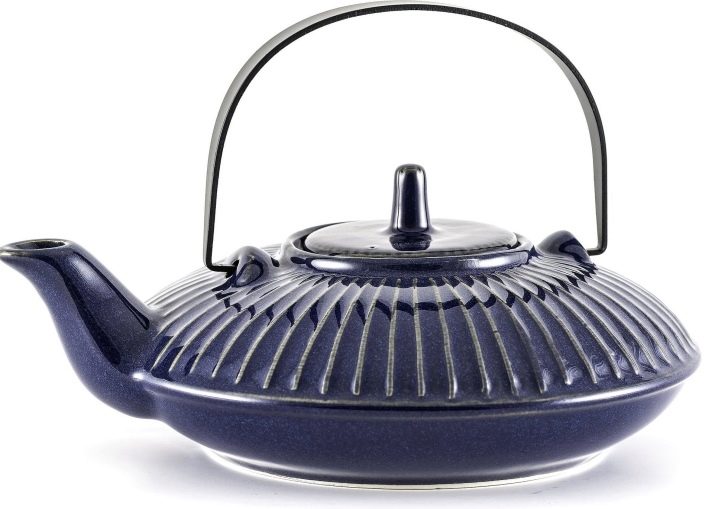
- Among the teapots by Taller models with a glass body and a handle, as well as a metal lid prevail. The teapots are either round or slightly elongated, and the volume ranges from 700 to 1000 ml. All designs are equipped with a strainer. The cost of such teapots from this manufacturer varies from 1000 to 2000 rubles, depending on the model.
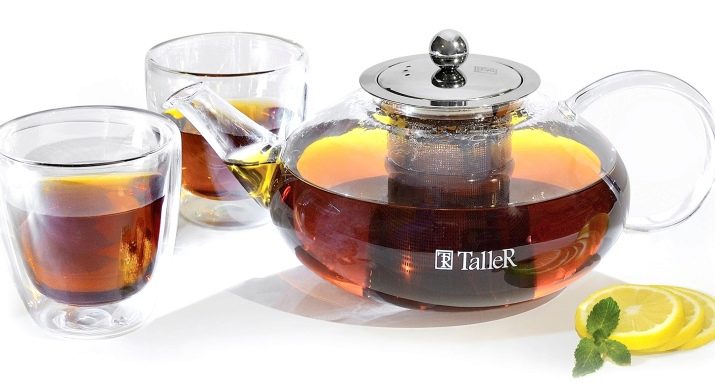
- Bodum company interesting for its teapots with a press, made in a very elegant and unusual design. These models have a volume of 0.3 liters or 1 liter, but they are not cheap - from 2500 to 5900 rubles. Even the round teapots from this brand are equipped with a press, which is located inside a glass case. This Danish company is a real professional in the production of various brewing structures based on a model of a classic French press.

- Japanese porcelain teapots from by Zero with a volume of 0.5 liters, they are notable for the fact that, in addition to the round shape, they are also presented in square and oval interpretations. These products are painted in solid colors and equipped with a metal cover. Such minimalist teapots look very aesthetically pleasing.

- Ceramic teapots from Chinese brand Jia-gui luo look very aesthetically pleasing and are also presented in a rich variety of case designs. A product with a volume of about a liter is painted with various patterns with a national Chinese theme and not only. This will allow you to choose not only a convenient, but also a beautiful unit for brewing a tea drink.

How to choose?
Even after familiarizing themselves with all the brands, many have difficulty choosing a teapot. To make this unit not only beautiful, but also as functional as possible, listen to the following recommendations for choosing such products:
- pay attention to the lid of the product - there must be a hole in it to avoid overheating of the drink, as well as at least one fixing antenna so that it does not fly off the body during the pouring of tea into cups;
- the location and size of the handle is also important - it is most convenient if it is located at the top of the structure, but in a number of models this is impossible, so it is worth checking when choosing how convenient it is to hold the kettle by the handle at different angles of inclination; the size of the pen should fit the size of your brush;
- so that tea does not spill during brewing and spilling, pay attention to the design of the spout - its end should be at the same level with the teapot lid or even above it; in relation to the body, the angle of inclination should be from 30 to 35 degrees;
- pay attention to what a strainer is in the design of the teapot - in some models it is presented in the form of holes at the base of the spout, the size of these holes should not be too large or small; and it is also preferable if stainless steel serves as the material for the manufacture of the strainer;
- when choosing gift teapots, remember that their price can be quite high, since, first of all, such products are original and even exclusive; some stylish options for teapots, which, in addition to functionality, combine an ensemble of different materials and belonging to the family brand, will also cost a lot, so check out the options in advance to plan your budget;
- based on the fact that different materials are preferable for different types of tea, be guided by the criterion of preference for black, white, green or red varieties of tea when choosing a product;
- do not neglect such criteria as additional functions of teapots for brewing, because some models are suitable not only for brewing tea, but also coffee.
For an overview of the teapot with a button, see below.








